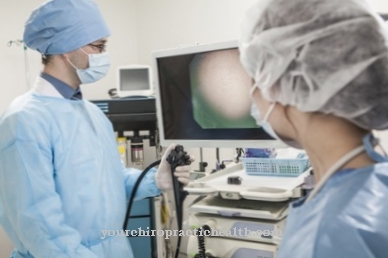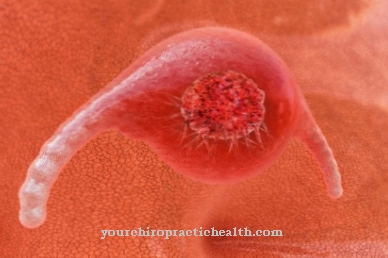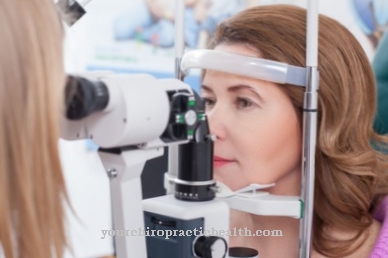In the Phototherapy are medical treatments using artificial light such as white light or UV lamps. These therapy methods are used to remedy organic and psychological complaints. Phototherapy is primarily used for depression and various skin diseases.
What is phototherapy?

As Phototherapy treatment with lasers can also be referred to, which has celebrated success in a number of medical fields such as ophthalmology, cosmetic treatments as well as surgery and cancer therapy in recent years.
Within the balneo phototherapy, for example, tub baths, which contain a brine that makes the body skin more light-sensitive, are supplemented by UV light irradiation. Heliotherapy uses natural sunlight. Professional phototherapy, for example, is carried out with infrared light for the heat treatment of rheumatic complaints and chronic inflammations (e.g. paranasal sinuses).
With a white light therapy, winter depression and sleep disorders are treated, among other things. Special UV radiation is used for skin diseases such as psoriasis, neurodermatitis and acne. Blue light phototherapy has proven effective in newborns with jaundice.
Function, effect & goals
The Phototherapy Understandably affects the respective body very differently with its different light variants. In particular, infrared light promotes the warming effect and increases blood circulation. It also has a pain-relieving and muscle-relaxing effect.
On the other hand, UV light mainly impresses with its effect on the individual skin cells. Such phototherapy can calm the immune system within the upper layers of the skin it needs. Phototherapy plays an extremely important role in the case of allergic complaints / diseases such as neurodermatitis, as it calms the overactive immune system.
In addition, targeted phototherapy using UV light radiation can also significantly reduce inflammatory skin diseases. For example, a treatment for psoriasis has a growth-inhibiting effect, so that increased peeling and new formation of skin cells is stopped.
The blue light from phototherapy is used in pediatrics for newborns with jaundice. The yellowish color of the skin is the result of deposits from the breakdown products of hemoglobin (red blood pigment). This can only be excreted in small amounts by the kidneys.
With the help of blue phototherapy, this dye breaks down into components that are readily soluble and are thus released into the urine. Other different special applications are made possible with the help of UV radiation, such as a treatment of the blood, which takes place outside the respective body.
Phototherapy with bright, white light, which is similar to sunlight, is used specifically in therapies against sleep disorders. This type of phototherapy is usually called light therapy. Sleep disorders are mainly caused by the shift in the individual bio-rhythm (e.g. shift work). If, however, irradiation takes place in front of a light shower (fluorescent screen) at regular intervals, the organism can return to its original day / night rhythm by means of phototherapy. The trigger for this is the lack of daylight / sunlight, which causes important hormones and messenger substances such as serotonin and melatonin to fall into an imbalance.
Sunlight, for example, contains around 3 to 7 percent ultraviolet radiation, whereby the UV spectrum can be broken down into UVA and UVB light according to wavelength. The UVB component is responsible for sunburn, for example, and is therefore filtered out in conventional solariums. The luminosity of phototherapy is usually 2,000 lux or even more. For example, normal interior lighting is around 500 lux and daylight is around 10,000 lux during the summer.
Risks & dangers
Any risks or side effects of a Phototherapy usually arise only for a short time. These are complaints such as headaches or skin irritations. Since the eyes can be more affected with some forms of phototherapy, phototherapy should not be used in the presence of individual eye diseases.
Any variant of phototherapy may only be carried out under the supervision of a doctor, as UV radiation, for example, only has a positive effect within extremely minor limits. If phototherapy is overdosed, severe skin damage can result.
















.jpg)
.jpg)



.jpg)






